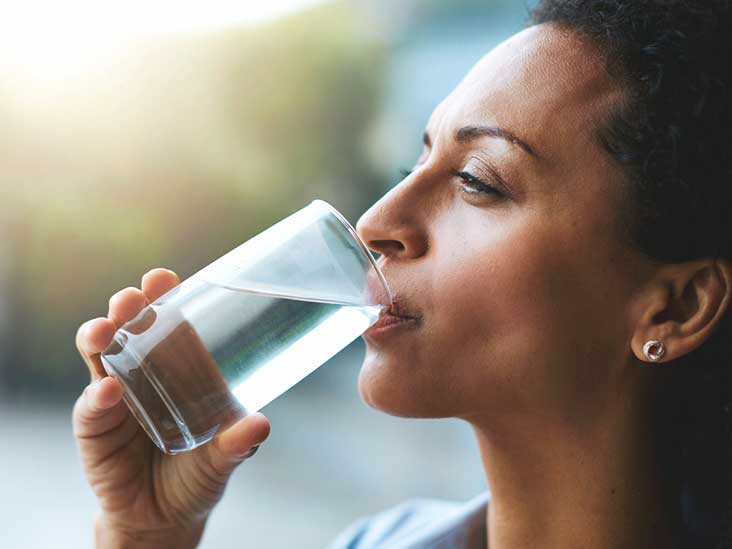Sports Nutriton
Polydipsia: Causes, Symptoms And Remedies
Polydipsia is not a disease or it is not a disorder but a symptom of many a condition characterized by an excessive need to take in fluid or the excessive thirst. The excess in need to quench a thirst, therefore, leads an affected individual to take in lots of water or any fluid which can potentially set forth an imbalance in the fluid and electrolyte balance of the body.

The most obvious symptom of polydipsia is a feeling of extreme thirstiness. This symptom is especially noticeable when you feel this way even after you’ve already drunk a lot of water.
Other common symptoms of polydipsia include:
Passing continuously high amounts of urine (more than 5 liters a day)
A persistent feeling of dryness in your mouth.
You might notice other symptoms if your polydipsia is due to an underlying condition like diabetes. Some common diabetes mellitus symptoms that might accompany polydipsia include:
- Feeling abnormally hungry
- Having blurry vision
- Exhaustion
- Abnormal weight loss or weight gain
- Getting frequent sores or infections
- Slow healing of sores or infections.
Drinking too much water can also lead to water intoxication, which is sometimes called water poisoning. This condition happens when you drink excessive amounts of water. Doing so can dilute the amount of sodium in your blood and lower your blood sodium to dangerously low levels, also called hyponatremia. This can cause symptoms such as:
- Headaches
- Feelings of dizziness or disorientation
- Muscle cramps or spasms
- Unexplained seizures.
Causes
Some causes of polydipsia include:
- Diabetes mellitus
- Diabetes insipidus
- Dehydration
- Loss of body fluids
- Certain medications
- Dry mouth.
Home remedies to treat polydipsia
Tinospora Cordifolia (Giloy) & Paddy (Rice)

Procedure:
- Take fresh Tinospora Cordifolia leaves (about 50 grams).
- Take Paddy (50 grams).
- Boil both the ingredients in one liter of water.
- Boil until the water quantity turns to 150 ml.
- Strain the liquid and drink two times a day.
- Repeat the procedure for a few days.
How Does It Work?
Giloy (Tinospora Cordifolia): Giloy or Guduchi is one of the rejuvenating herbs for the human body. Giloy is light in nature but has hot potency. It is used in the treatment of excessive thirst, diabetes, burning sensation, cough, jaundice, anemia, leprosy, fever, bleeding disorders, worm infestation, vomiting, etc.
This herb works the best when taken in fresh form. Though dried leaves are also good, they are not as effective as the fresh ones. The reason why it is one of the best home remedies for polydipsia is due to the presence of active adaptogenic compounds, which include tinosporone, cordifolisides A – E, tinosporic acid, syringen, yellow alkaloid, Giloin, berberine, arabinogalactan polysaccharide, and crude Giloininand. The giloy leaves are enriched with proteins, phosphorous, and calcium.
Cumin and Chickenweed Leaves (Portulaca quadrifida)

Procedure:
- Take some fresh chickenweed leaves.
- Clean them properly using water.
- Take 1 teaspoon of cumin and grind the leaves with it.
- Eat this paste raw to get rid of excessive thirst.
How Does It Work?
Cumin: These tiny seeds have been used for multiple medicinal purposes since ancient times. It has anti-carcinogenic properties. They are well known for quenching thirst. Cumin seeds are enriched with copper, iron, zinc, manganese, magnesium, potassium, sodium, Carotene-ß, Lutein-zeaxanthin, and Crypto-xanthin-ß.
Chickenweed Leaves: These herbal leaves belong to the family Portulacaceae. They are a rich source of carbohydrates, alkaloids, and amino acids. It helps in quenching the thirst and maintaining the overall urinary health too.
Brown Sugar, Milk, Marsilea Quadrifolia (Water Clover)

Procedure:
- Take some fresh water clover leaves (Marsilea Quadrifolia). Dry them in sunlight and powder it nicely.
- Take 30 g of this powdered leaves and boil it with ½ liter of water for 10 minutes.
- Filter the liquid and mix it with a little milk.
- Add brown sugar to enhance the flavor.
- Drink to treat excessive thirst problem.
- Follow the remedy for a few days.
How Does It Work?
Water Clover: Scientifically it is known as Marsilea Quadrifolia, water clover belongs to the family Marsileaceae. These evergreen herbal leaves are a good source of protein and beta-carotenes. Water clover leaves exhibit anti-diabetic properties. The plant is known to be effective in the treatment of diabetes symptoms, bronchitis, and bipolar disorder.
Milk: Cow’s milk is a rich source of electrolytes, calcium, carbohydrates, and proteins. Hence, they help in supplying the body the essential nutrients and hydration it needs.
Brown Sugar: It is 100% natural sucrose sugar. Unlike white sugar, the brown version does not contain harmful substances like formic acid, phosphoric acid, sulfur dioxide, surfactants, flocculants, viscosity modifiers or other bleaching agents. Just a tablespoon of brown sugar is enough to fortify the body with adequate potassium, carbohydrates, proteins, iron, calcium, folate, pantothenic acid, copper, selenium and other trace elements.
Water Lily Petals and Water

Procedure:
- Take 200 grams of fresh petals of water lily.
- Soak them in 5 liters of water for 1 day.
- Filter the liquid and drink 2 times a day.
- Repeat the procedure for a few days.
How Does It Work?
Water Lily: Not only is this flower amazing to look at but also has multiple health benefits while the one being the ability to treat excessive thirst problem. The active compounds in water lily are tannins, glyphosate, fluridone, triclopyr, and imazamox.
Hence, it is very essential for an early diagnosis and immediate treatment of polydipsia and the disorders related to it such as polyuria for the purpose of averting life-threatening disorders or diseases such as heart arrest, tumor, and also severe neurological problems.


